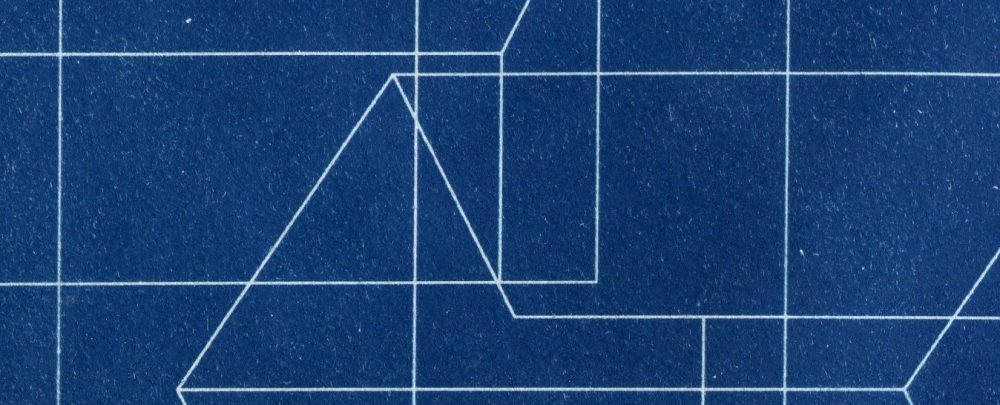2017.03.22. – 03.28.
Dobokay Máté, Kristóf Gábor és Mélyi József projektje
megnyitja: Mújdricza Péter
Occam városa lehetne egy konkrét település vagy a valóságra alkalmazható filozófiai példázat – de nincs realitása. Egy képzeletbeli konstrukció, amely a kétdimenziós kép, a térbeli geometrikus struktúra és az urbanisztikai modell között lebeg. A logikai metaforából ismert borotva helyett a kiindulópont egy egyszerű kontúrú, közönséges stanckés. Egy készen talált tárgy. A késsel kivágott és egymásra rétegzett kartonelemekből térbeli forma jön létre, majd egy számítógépes program segítségével a test virtuális sík felületekre bomlik szét. Az így keletkezett síkidomok egyikének körvonalából penge készül; a lépések megismétlődnek: kivágás, extrudálás, felbontás. Az alapformából és mutációiból így egy formasor alakul ki, amelynek egyaránt része a valós tárgy, a sík lap, a térbeli struktúra és a virtuális szerkezet. A sorozat elemei új rendszerben, a régi építészeti rajzok hordozóin, blueprinteken jelennek meg, együttesük pedig városképekre emlékeztet.
A dobozkészítéshez használt hétköznapi kés és a múltból előbukkanni látszó urbanisztikai látomás között a kapcsolatot egyszerű logikájú laboratóriumi kísérletek teremtik meg. A kísérletezők: egy fotográfus és egy festő; két képalkotó és virtuális képbontó. Közös tevékenységük lenyomata a modernizmus ma egyfelől ünnepelt, másfelől elbukottnak gondolt tér-, architektúra- és városteremtő elképzeléseit idézi: Donald Judd hajtogatott minimalista formáit, Buckminster Fuller előadásainak illusztrációit, vagy a szovjet tervezők El Liszickij által összegyűjtött utópisztikus építészeti vázlatait. A végeredménynél és a történeti párhuzamoknál lényegesebb azonban maga a folyamat, az egyszerű lépésekből felépülő, saját szabályokat következetesen alkalmazó konstruktív kísérlet, amely a realitásból kiindulva új valóságot teremt.
Támogató: Stancforma Kft. / NKA
Kristóf Gábor az Emberi Erőforrások Minisztériumának Derkovits Gyula ösztöndíjasa
//
Occam’s City
A project by Máté Dobokay, Gábor Kristóf and József Mélyi
opening speech by Péter Mújdricza
Occam’s city could be an actual settlement or a philosophical parable applied to reality – but it is simply not realistic. It is an imaginary construction that hovers between the two-dimensional picture, a three-dimensional geometric structure and an urban model. Instead of the razor from the familiar logical metaphor, the starting point was an ordinary steel cutting die – a ready-made, found object. From the individually cut and layered cardboard elements a three-dimensional form emerges, and then with the aid of a computer program the solid body falls apart again into virtual flat surfaces. Out of the silhouette of one of these plane figures a cutting blade is made, and the steps are repeated: cutting, extruding, decomposing. Out of the basic pattern and its mutations a series of shapes comes into being of which the concrete object, the plane, the three-dimensional structure and the virtual construction are all part. The elements of the series appear in different ensembles on blueprints evoking the bases of old architectural drawings and reminding a virtual cityscape.
Laboratory experiments based on simple logic create the connection between the ordinary steel cutting blade and an urbanistic vision that seems to emerge from the past. The experimenters are a photographer and a painter: two picture-creators and virtual picture-decomposers. The imprint of their joint work recalls the ideas of the spatial, architectural and urban designs of Modernism, such as the folded, minimalist forms of Donald Judd, the illustrations of Buckminster Fuller’s lectures or the utopian architectural sketches of Soviet designers collected by El Lissitzky, which today are celebrated on one hand and regarded as failed attempts on the other. But the process, as a constructive experiment based on simple steps, consistently applying its own rules to create a new reality is much more significant than the final result or its historical parallels.

